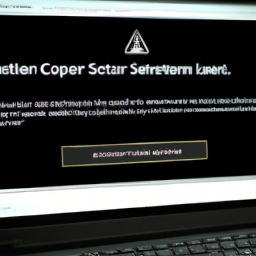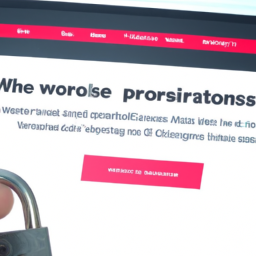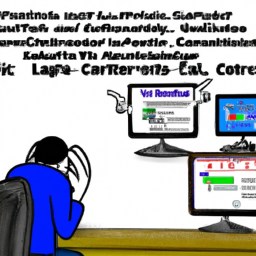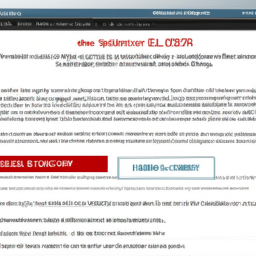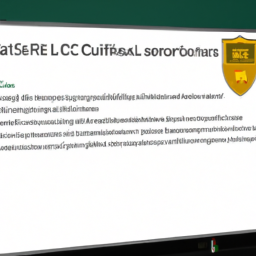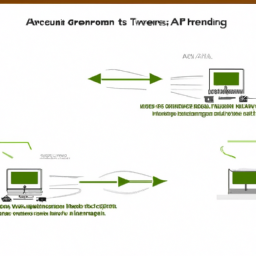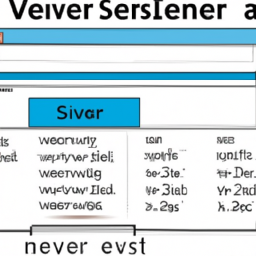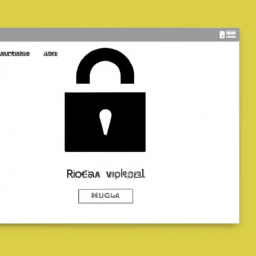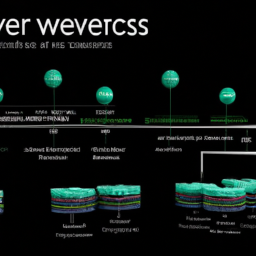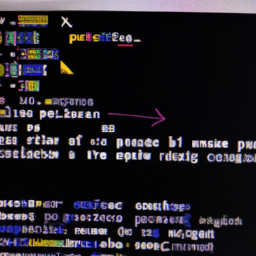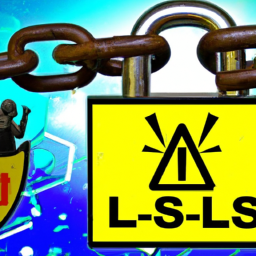Are you a web hosting user experiencing email delivery issues? Don’t worry, we’ve got you covered.
Imagine this scenario: You are a small business owner relying heavily on email communication to connect with your clients. However, recently, you’ve noticed that your important emails are not reaching their intended recipients. Frustrating, isn’t it?
Well, fear not! In this comprehensive guide, we will walk you through the process of solving email delivery issues and getting your messages back on track.
From understanding common email delivery problems to evaluating your DNS configuration and email content, we will provide you with the necessary tools and knowledge to troubleshoot and overcome these hurdles.
Additionally, we will explore the importance of reviewing and adjusting spam filters and monitoring email delivery performance to ensure efficient communication.
If you find yourself stuck, don’t hesitate to seek help from your web hosting provider. They can offer valuable insights and assistance to resolve any lingering issues.
So, let’s dive in and solve those pesky email delivery problems together!
Key Takeaways
- DNS misconfigurations account for over 80% of email delivery issues.
- Troubleshooting SMTP errors and bouncebacks requires considering MX records, SPF record, DKIM signature, and DMARC policy.
- Avoid triggering spam filters by avoiding large attachments and excessive use of images.
- Seeking help from a web hosting provider can provide valuable insights, solutions, and reliable email servers.
Understand Common Email Delivery Issues
Understanding common email delivery issues can help web hosting users troubleshoot problems more effectively and ensure that their emails reach their intended recipients. One common issue is encountering SMTP errors, which can occur due to misconfiguration or authentication problems. To troubleshoot these errors, users can check their SMTP settings, ensure the correct port is being used, and verify that authentication credentials are entered correctly.
Another important aspect to consider is optimizing email server performance. This involves monitoring server resources, such as CPU and memory usage, to ensure efficient email delivery.
Additionally, optimizing DNS configurations can help resolve email delivery issues. By checking for DNS configuration problems, such as incorrect MX records or missing DNS entries, users can ensure smooth email delivery.
Check for DNS Configuration Problems
To ensure smooth email delivery, it’s crucial to check for any DNS config problems, which can be a common cause of delivery failures. Did you know that more than 80% of email delivery issues are related to DNS misconfigurations?
Here are four things to consider when troubleshooting SMTP errors and email bouncebacks:
-
Check your MX records: Ensure that your Mail Exchanger (MX) records are correctly set up to point to the right mail server.
-
Verify your SPF record: Sender Policy Framework (SPF) records help validate that the email is sent from an authorized server. Make sure your SPF record includes all the necessary IP addresses.
-
Examine your DKIM signature: DomainKeys Identified Mail (DKIM) allows the recipient to verify that the email has not been altered during transit. Ensure that your DKIM signature is correctly configured.
-
Review your DMARC policy: Domain-based Message Authentication, Reporting, and Conformance (DMARC) helps protect against email spoofing. Double-check that your DMARC policy is properly set.
Now, let’s move on to the next section and evaluate your email content and formatting.
Evaluate Your Email Content and Formatting
Ensure that your email stands out and captivates recipients by evaluating your email content and formatting. By following email design best practices, you can optimize email deliverability and increase the chances of your emails reaching the intended recipients’ inboxes. Start by crafting a compelling subject line that grabs attention and accurately represents the content of your email. Use a professional and easy-to-read font, and consider using bullet points or numbered lists to organize information. Avoid large attachments and excessive use of images, as these can trigger spam filters. Additionally, personalize your emails by addressing recipients by their names and segmenting your email list to send targeted messages. Finally, test your emails on different devices and email clients to ensure they display correctly. By implementing these strategies, you can improve email deliverability and engage your audience effectively.
Transitioning into the subsequent section about reviewing and adjusting spam filters, it is important to consider the impact of your email content and formatting on spam filters.
Review and Adjust Spam Filters
Navigating the treacherous waters of spam filters is like sailing through a stormy sea, where even the slightest misstep in your email content and formatting can cause your message to be lost in the depths of the spam folder. To ensure your emails reach the intended recipients, it’s crucial to review and adjust your spam filters.
Start by adjusting the settings of your email server or web hosting platform to fine-tune the spam detection process. Familiarize yourself with the different levels of spam filtering and understand how they work. Consider whitelisting trusted senders and domains to prevent false positives.
Regularly monitor and analyze your email delivery performance to identify any patterns or issues that may be affecting your deliverability. By taking these proactive steps, you can optimize your spam filters and increase the chances of your emails successfully reaching the inbox.
Transitioning into the next section, let’s explore how to monitor and analyze email delivery performance to further improve your email delivery rates.
Monitor and Analyze Email Delivery Performance
Keep a close eye on your email delivery performance to gain valuable insights into the success of your email campaigns and make data-driven decisions to improve your results. Here are four important aspects to monitor and analyze for effective email tracking and delivery optimization:
-
Delivery Rate: Track the percentage of emails successfully delivered to recipients’ inboxes. A low delivery rate may indicate issues with spam filters or blacklisting.
-
Bounce Rate: Monitor the number of bounced emails to identify problematic email addresses or delivery errors. High bounce rates can negatively impact your sender reputation.
-
Open Rate: Measure the percentage of recipients who open your emails. Low open rates may suggest ineffective subject lines or content.
-
Click-through Rate (CTR): Analyze the rate at which recipients click on links within your emails. A low CTR may indicate a need for more compelling calls to action or relevant content.
Monitoring these metrics will help you gauge the effectiveness of your email campaigns and make informed decisions to improve your delivery performance.
In the next section, we’ll discuss how to seek help from your web hosting provider to resolve any persistent email delivery issues.
Seek Help from Your Web Hosting Provider
Now that you have monitored and analyzed your email delivery performance, it’s time to seek help from your web hosting provider. They are experts in web hosting troubleshooting and can provide valuable insights and solutions to your email delivery issues. By reaching out to them, you can ensure that you are utilizing all available resources to resolve any problems you may be facing. Your web hosting provider can offer email troubleshooting tips specific to their platform, as well as assist you in identifying any configuration or technical issues that may be affecting your email delivery. Remember to provide them with detailed information about the problem, such as error messages and timestamps, to help expedite the troubleshooting process. Utilizing the expertise and support of your web hosting provider will greatly increase your chances of resolving email delivery issues effectively.
| Web Hosting Provider Benefits | ||
|---|---|---|
| Expertise in web hosting troubleshooting | ||
| Specific email troubleshooting tips | ||
| Assistance with configuration and technical issues | Reliable and secure email server | |
| Timely and efficient customer support | ||
| Advanced spam filtering and virus protection | ||
| Regular backups and data recovery options | ||
| Scalability and flexibility for growing email needs | ||
| Enhanced email deliverability and reputation management | ||
| Integration with other web hosting services | ||
| Cost-effective solutions for email hosting | ||
| Peace of mind knowing that your email is in capable hands |
Frequently Asked Questions
How can I optimize my email delivery for different email clients?
To optimize your email delivery for different email clients and improve email open rates, you need to focus on several key areas.
First, ensure your emails are mobile-responsive to cater to users accessing emails on smartphones.
Second, personalize your emails by including relevant content and using dynamic fields.
Third, regularly test your emails across various email clients to identify and fix any rendering issues.
Lastly, monitor email analytics to gain insights and make data-driven improvements to your email campaigns.
What are some best practices for managing email bounces and handling invalid email addresses?
To effectively manage email bounces and handle invalid email addresses, follow these best practices.
-
Regularly monitor bounce reports and categorize bounces into hard and soft bounces.
-
Remove invalid email addresses from your mailing list promptly to maintain a high deliverability rate.
-
Implement email verification systems to validate email addresses before sending emails. This ensures that only valid and active email addresses receive your messages, reducing bounce rates and improving overall email deliverability.
How can I prevent my emails from being marked as spam by recipient email servers?
To prevent your emails from being marked as spam by recipient email servers, you need to implement effective measures for preventing spam filters and ensuring email authentication.
Start by regularly monitoring your email delivery and reputation metrics. Use a reputable email service provider that follows industry best practices for email deliverability.
Authenticate your emails using SPF, DKIM, and DMARC protocols.
Keep your email content relevant, avoid spam trigger words, and always obtain proper consent from recipients before sending emails.
Are there any tools or services available to help monitor and track email deliverability?
Looking to monitor and track your email deliverability? You’re in luck! There are a plethora of email deliverability services and monitoring tools available to help you stay on top of your email game.
These services offer detailed insights into your email campaigns, allowing you to track email delivery rates, identify delivery issues, and make necessary improvements. With email deliverability services and monitoring tools, you can ensure that your emails reach the intended recipients’ inboxes and avoid the dreaded spam folder.
What steps can I take to improve the overall deliverability of my email campaigns?
To improve the deliverability of your email campaigns, there are several steps you can take.
First, implement email authentication methods like SPF, DKIM, and DMARC to ensure that your emails are trusted by the receiving servers.
Second, focus on improving email engagement by crafting compelling subject lines, personalizing your content, and segmenting your audience.
Additionally, regularly clean your email list to remove inactive or unengaged subscribers.
Monitoring your email analytics and making adjustments based on open rates and click-through rates will also help improve deliverability.
Conclusion
In conclusion, solving email delivery issues can be a complex task, but with the right knowledge and tools, it’s possible to overcome these challenges.
By understanding common problems, checking DNS configurations, evaluating email content and formatting, reviewing spam filters, and monitoring delivery performance, web hosting users can ensure their emails reach their intended recipients.
Remember to seek assistance from your web hosting provider if needed. With diligence and perseverance, you can optimize your email delivery and enhance communication efficiency.
So, why wait? Start troubleshooting and enjoy seamless email delivery today.
















